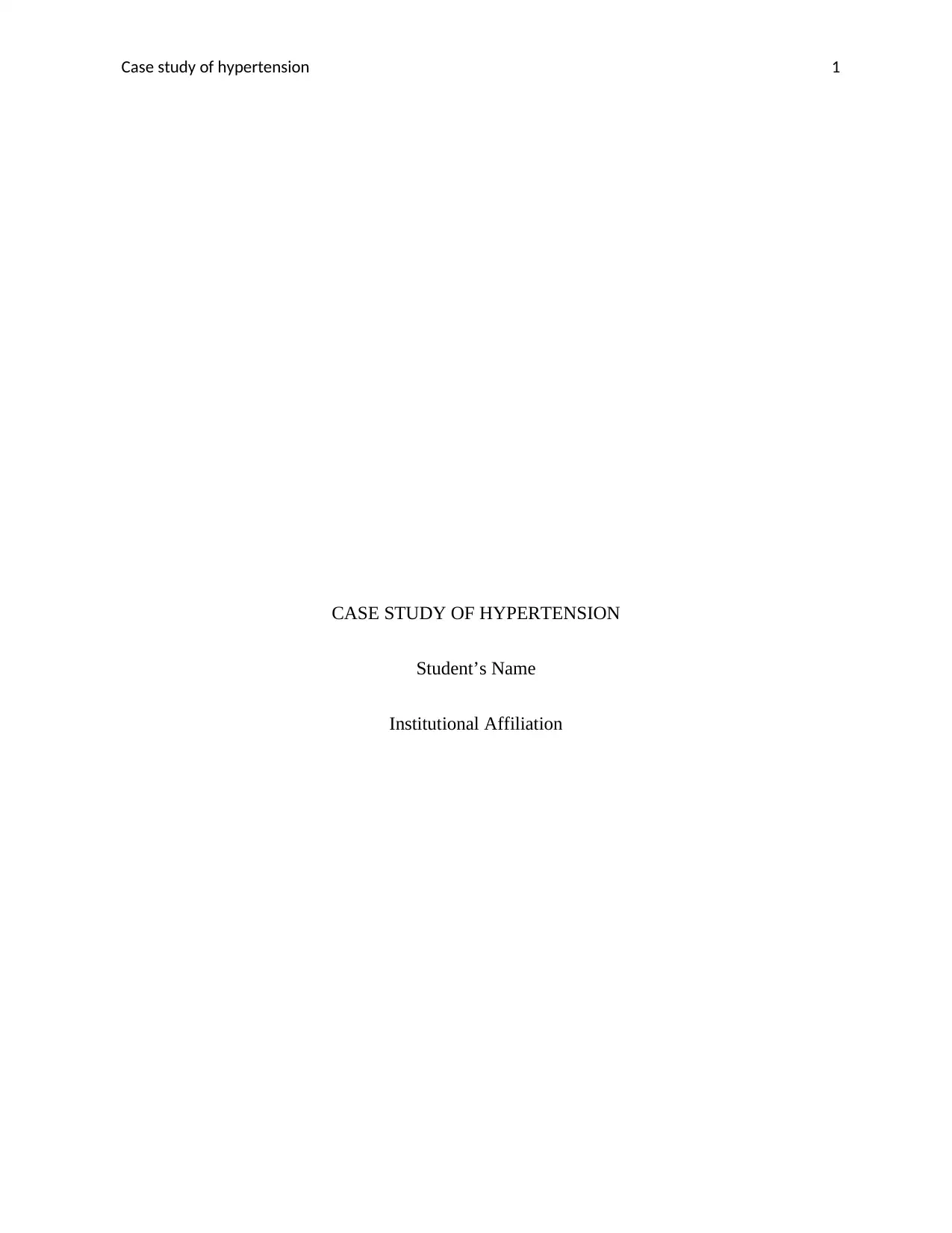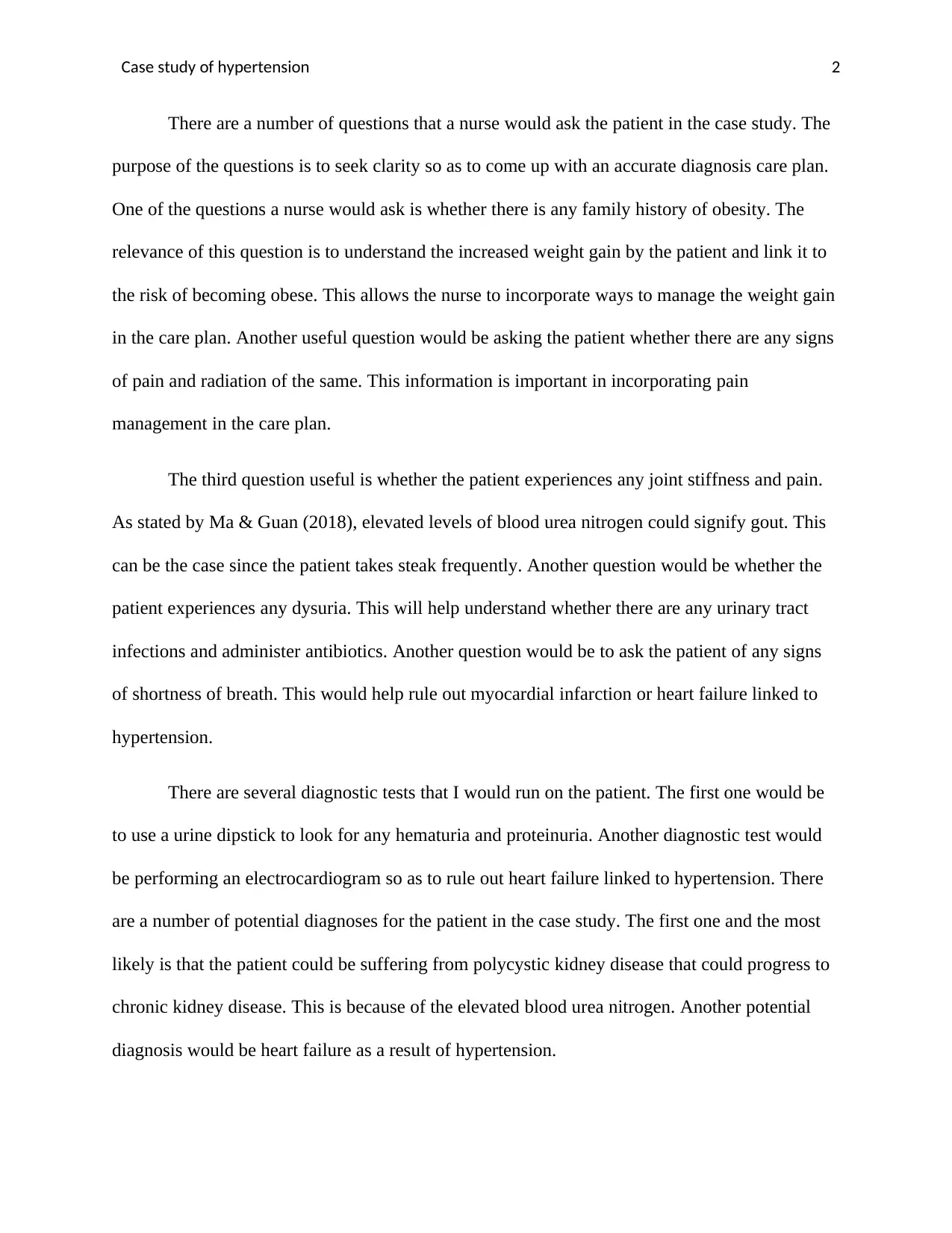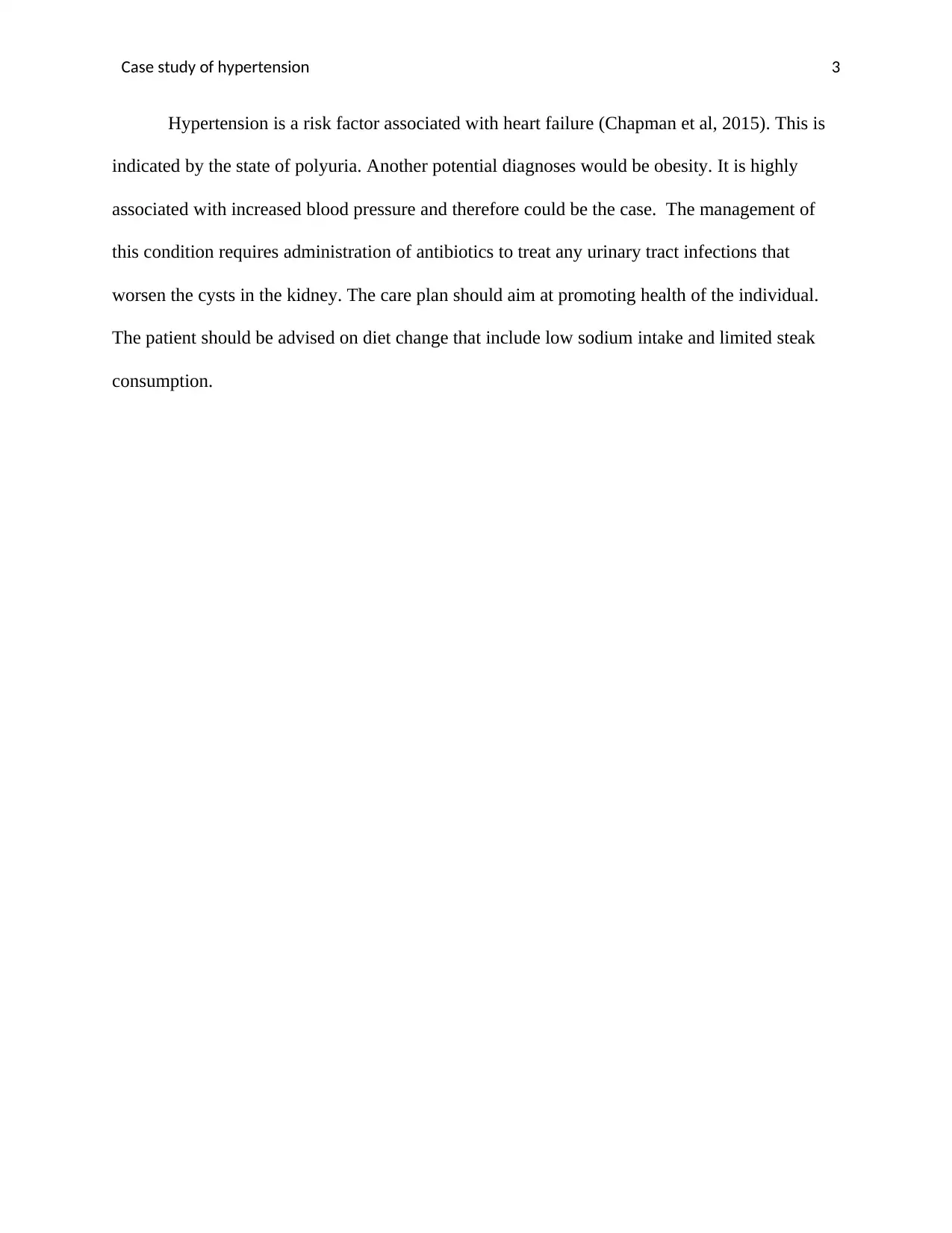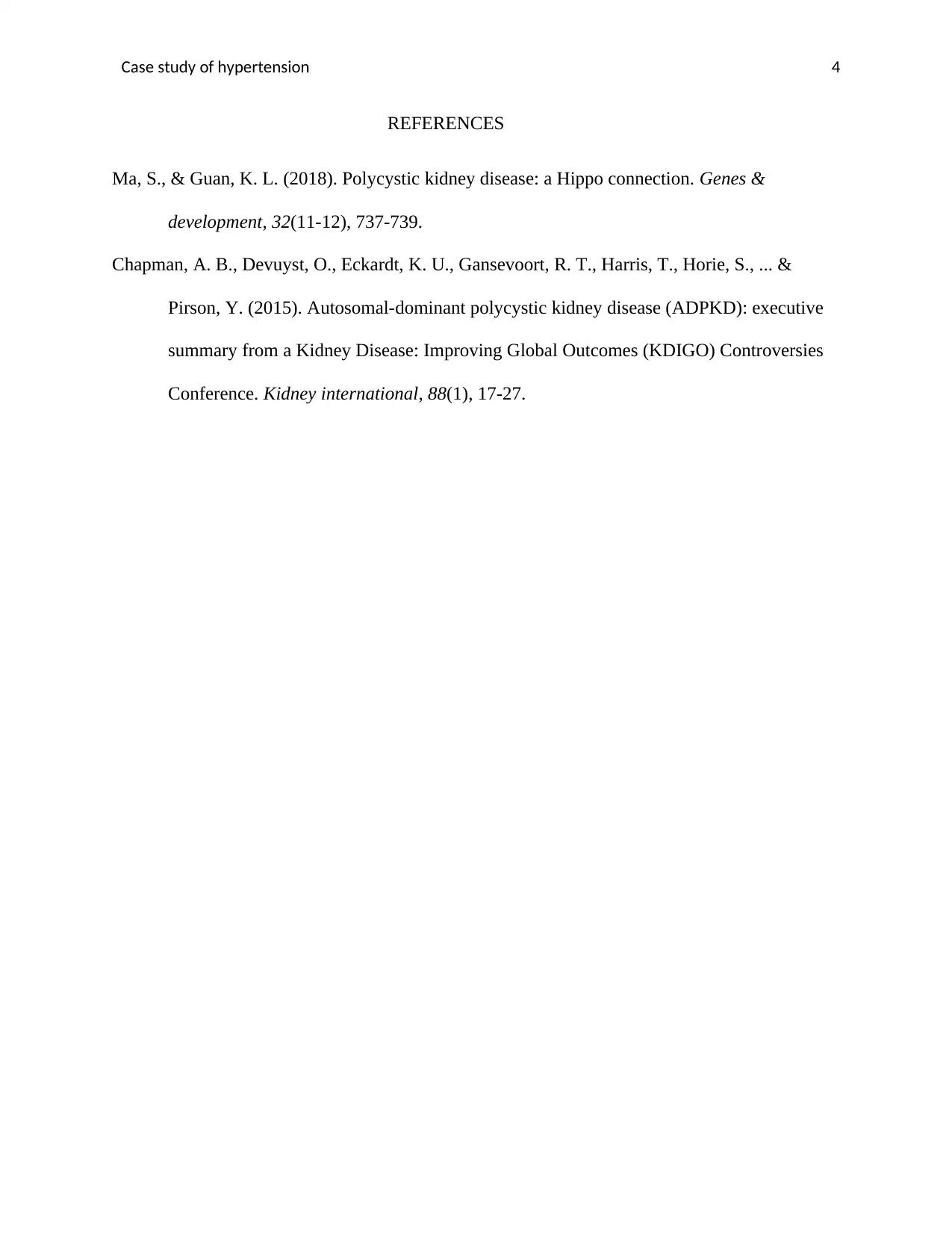Case Study Analysis: Hypertension, Symptoms, and Treatment
VerifiedAdded on 2023/01/18
|4
|586
|70
Case Study
AI Summary
The assignment presents a case study focusing on hypertension, exploring the diagnostic process and potential related conditions. The study begins by outlining key questions a nurse would ask the patient, such as family history of obesity, presence of pain, joint stiffness, and dysuria, to gather comprehensive information for an accurate diagnosis. It then details the diagnostic tests, including urine dipstick and electrocardiogram, used to rule out heart failure and other complications. The case study identifies potential diagnoses, including polycystic kidney disease leading to chronic kidney disease, heart failure due to hypertension, and obesity. The management plan emphasizes dietary changes, such as low sodium intake and reduced steak consumption, along with antibiotic administration to address urinary tract infections. The care plan aims to promote the patient's health and well-being through a multifaceted approach to managing hypertension and its associated risks.
1 out of 4











![[object Object]](/_next/static/media/star-bottom.7253800d.svg)